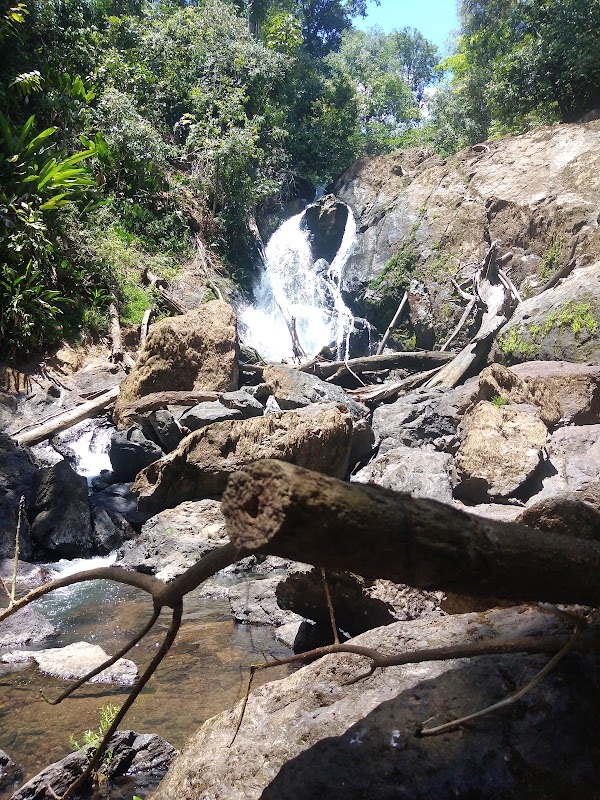Exploring Wildlife and Trails in Corcovado National Park Near Puerto Jiménez
Corcovado National Park near Puerto Jiménez offers some of Costa Rica's most thrilling wildlife viewing and day hikes, delivering a blend of rugged rainforest trails and dramatic coastal vistas. This guide provides clear trail info and practical tips to help you experience the park’s wild character confidently.
Start Before Sunrise
Wildlife activity and cooler temperatures are best early in the morning; trails dry out and animals are more visible.
Wear Grippy, Waterproof Footwear
Trails can be slippery due to wet rocks and muddy sections; sturdy boots with good traction will help maintain your footing.
Carry Ample Water and Snacks
Humidity and physical effort require staying well-hydrated and fueled; bring at least two liters of water and energy-dense snacks.
Reserve Your Entry Permit in Advance
Entry permits are limited and mandatory; book ahead through official channels to avoid disappointment.
Exploring Wildlife and Trails in Corcovado National Park Near Puerto Jiménez
Corcovado National Park, located on the Osa Peninsula near Puerto Jiménez, is a wild heart of Costa Rica that demands respect and rewards persistence. Known for its dense rainforest, rugged coastal trails, and biodiversity, it offers wildlife watching and hiking opportunities that challenge adventurers both mentally and physically.
Start your day early. The park wakes slowly, with monkeys barking from the canopy and toucans calling from high branches. The Sirena Station trail is a must: this popular route covers roughly 10 kilometers (6.2 miles) with an elevation gain of about 400 meters (1,300 feet). The terrain shifts from muddy forest floors to rocky river crossings that dare you to stay steady. Along the way, scarlet macaws flash overhead like streaks of flame, and tapirs might slip through the underbrush unseen but deeply felt.
Another excellent option for day hikers is the San Pedrillo trail, about 8 kilometers (5 miles) one way, following coastal cliffs and dense jungle edges. The hike reveals expansive ocean views where currents charge beneath you. Expect slippery rocks and steep inclines, so traction-focused footwear is essential. Keep your binoculars ready: the shorelines attract occasional resident dolphins and if you’re lucky, a glimpse of elusive jaguars may show—rare but real.
For wildlife watchers, dawn and dusk are prime times. At these edges between dark and light, the forest seems to hold its breath; colorful poison dart frogs pulse in the damp shade, and howler monkeys issue warnings to the moving shadows. Don’t rush—silence reveals the forest's characters.
Hydration and pace are your allies here. The rainforest's humidity pushes you forward as much as it weighs on you. Pack at least two liters of water and snacks that provide long-lasting energy. Use sturdy hiking boots with good ankle support; the trails shift from soft leaf litter to jagged rocks unannounced.
Puerto Jiménez serves as your staging ground—offering rustic charm, friendly supply points, and guides familiar with the park’s temperament. Early permits are required for Corcovado access, so plan ahead to secure your spot and avoid last-minute hurdles.
Engaging with Corcovado is stepping into a world fiercely itself. The environment won’t just unfold before you passively; it will challenge your steps, surprise your senses, and teach respect through every step made. Come prepared, stay alert, and allow the forest and coastline to pull you into an adventure that’s both raw and life-affirming.
Nearby Trips
All Adventures
Boat Charters
Water Activities
Adventures near Puerto Jiménez
Discover the unique and memorable adventures that make Puerto Jiménez special.
Frequently Asked Questions
Do I need a guide to hike in Corcovado National Park?
Guides are not mandatory but highly recommended for safety and to enhance wildlife spotting. Their local knowledge helps navigate slippery trails and identify animal signs.
What wildlife can I expect to see on these hikes?
Expect to see scarlet macaws, howler monkeys, tapirs, and if fortunate, elusive jaguars. Poison dart frogs and tropical birds also populate the trails near streams and open clearings.
Are the trails safe for beginner hikers?
Trails here are challenging, with uneven terrain and river crossings. Beginners with moderate fitness can manage shorter hikes like to San Pedrillo but should prepare with sturdy footwear and hydration.
How do I secure a permit to enter Corcovado National Park?
Permits are issued by SINAC and must be arranged ahead of time, often through official websites or authorized tour operators. Walk-in permits are rare due to limited daily quotas.
What is the best time to photograph wildlife and landscapes?
Early morning and late afternoon offer soft lighting and peak wildlife activity. Coastal viewpoints near San Pedrillo also provide excellent ocean vistas around sunset.
Are there any cultural or historical sites within or near the park?
The region has a rich indigenous history and early settler influence. Some trails pass by old ranger stations and community outposts that reflect this heritage.
Recommended Gear
Sturdy Hiking Boots
Protect from uneven, wet terrain and provide ankle support for slippery trails.
Lightweight Rain Jacket
Necessary for sudden tropical downpours common in the rainy season.
Hydration System (Camelbak or Bottles)
Maintains water supply for long hikes in heat and humidity.
Binoculars
Enhances wildlife viewing, especially for birds and distant animals.
Local Insights
Hidden Gems
- "La Leona Waterfall viewpoint offers a serene break from main trails with fewer visitors"
- "Cascada Wilson, a lesser-known cascade outside the main Sirena area, perfect for a quiet swim"
Wildlife
- "Osa Peninsula harbors unique species like the baird’s tapir, harpy eagle, and glass frogs, which can be spotted by trained guides"
- "Scarlet macaws perform their dramatic flights at dawn and dusk above the canopy"
History
"Corcovado was declared a national park in 1975 with a mission to preserve one of the last sizable tropical lowland rainforests in Central America."

